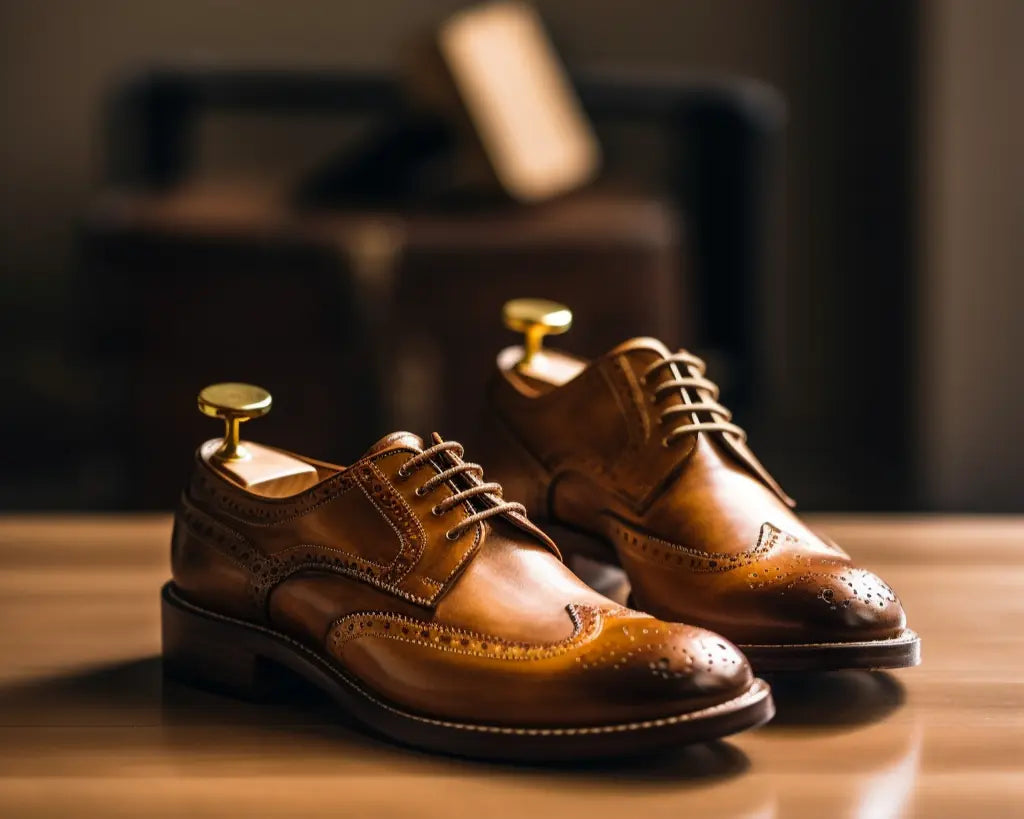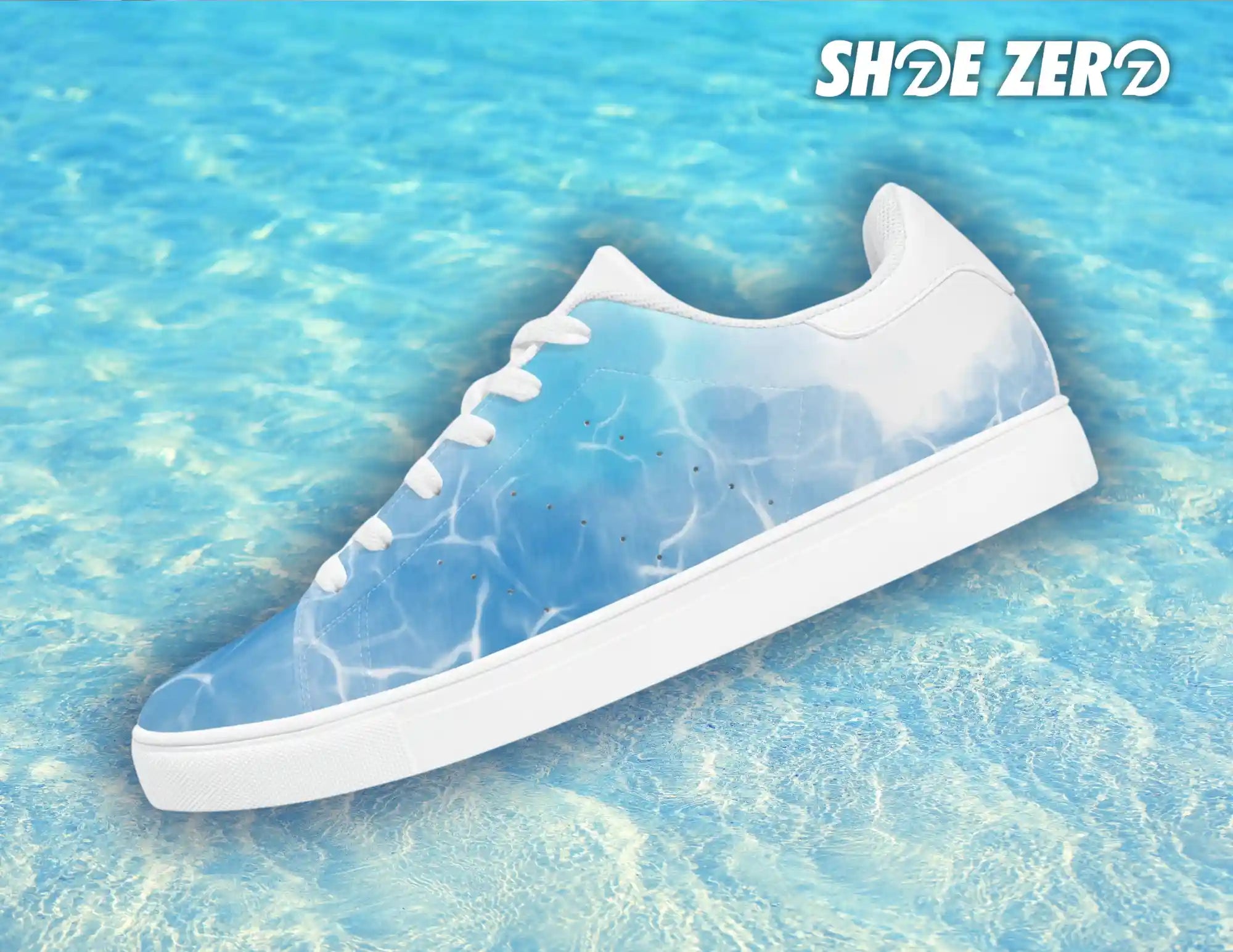If you've ever found yourself with a pair of shoes that are just a tad too snug, you're not alone. Whether it's a new pair that needs breaking in or an old favorite that's become a bit tight over time, the discomfort of tight shoes can be frustrating. Thankfully, there's a solution that doesn't involve sacrificing style for comfort: shoe stretchers. In this comprehensive guide, we'll walk you through everything you need to know about stretching shoes effectively, from understanding the different types of stretchers to using them on specific materials. Say goodbye to pinched toes and blisters – let's dive into the world of shoe stretchers!
Shoe Stretcher: 5-Step Instructions
Stretching your shoes might sound like a complicated process, but it's actually quite straightforward. Here's a quick rundown of the five-step process to ensure you get the best results:
1. Inspect Your Shoes: Before using a stretcher, make sure your shoes are clean and free from debris. This prevents any damage during the stretching process.
2. Insert the Shoe Stretcher: Place the shoe stretcher inside your shoe. Make sure it's adjusted to match the tight area that needs stretching.
3. Expand the Stretcher: Gradually turn the stretcher's knob to expand it. This exerts pressure on the shoe's material, gently stretching it.
4. Let it Sit: Leave the stretcher in the shoe for at least 24 hours. This gives the material time to adjust to the new shape.
5. Test and Repeat: After removing the stretcher, try on the shoes. If more stretching is needed, repeat the process until you achieve the desired fit.
Understanding Shoe Stretchers
Shoe stretchers are specialized tools designed to increase the width or length of your shoes. They work by exerting pressure on the shoe's material, encouraging it to stretch and mold to a more comfortable shape. Whether you're dealing with leather, canvas, or synthetic materials, a shoe stretcher can be a game-changer in your footwear collection.
Different Types of Shoe Stretchers
There are various types of shoe stretchers available, each catering to specific shoe types and materials:
1. Two-Way Shoe Stretchers
2. Spot Shoe Stretchers
3. Instep Shoe Stretchers
4. Toe Stretchers
Toe stretchers focus on widening the toe box, providing relief for cramped toes.
Key Factors for Selecting a Shoe Stretcher
When choosing a shoe stretcher, consider these factors:
1. Material Compatibility: Ensure the stretcher is suitable for your shoe's material.
2. Adjustability: Look for stretchers with adjustable knobs for precise stretching.
3. Type of Stretcher: Choose the type that suits your specific needs – length, width, or spot stretching.

How to Determine Your Shoe Stretcher Size
Getting the right size stretcher is crucial. Follow these steps:
Measure Your Shoe Size: Use a shoe sizing chart to determine your shoe size accurately.
Check Stretcher Sizing: Most stretchers come with sizing guides. Match your shoe size to the appropriate stretcher size.
Using Shoe Stretchers Effectively
To make the most of your shoe stretcher, keep these tips in mind:
Go Slowly: Gradually increase the stretching pressure to avoid damaging the shoe.
Patience is Key: Give the stretcher time to work. Overnight stretching often yields the best results.Stretching Specific Shoe Materials
Different materials require different approaches:
Leather: Leather shoes respond well to stretching. Use a shoe stretching spray to soften the leather before stretching.
Canvas: Canvas shoes can be stubborn. Use a water and alcohol mixture to soften the material before stretching.
Synthetics: Synthetic materials can be delicate. Use a lower pressure setting and stretch in shorter increments.
Benefits of Using a Shoe Stretcher
Using a shoe stretcher offers numerous benefits:
Comfort: Bid farewell to tight, uncomfortable shoes.
Extended Shoe Lifespan: Stretching can prevent creasing and prolong the life of your shoes.
Versatility: Stretchers work on various types of shoes, from heels to sneakers.
Comparing Wood vs. Plastic Shoe Stretchers
Both wood and plastic stretchers have their advantages:
Wood Stretchers: Durable and absorbent, suitable for leather shoes.
Plastic Stretchers: Lightweight and great for canvas and synthetic materials.
Addressing Common Shoe Discomfort
Shoe discomfort is a common woe. Stretchers can help with issues like:
Blisters: Stretching can create more room, preventing friction and blisters.
Pinched Toes: Stretching the toe box eases pressure on your toes.
Heel Pain: Heel discomfort can be alleviated by stretching the back of your shoe.
Shoe Stretching for Various Foot Issues
Stretchers can address specific foot problems:
Bunions: Spot stretchers can relieve pressure on bunions.
Hammer Toes: Stretching the toe box can help with hammer toes.
Corns: Stretchers can minimize irritation caused by corns.
DIY Shoe Stretching Techniques
In addition to stretchers, here are some DIY techniques:
Freezing Method: Fill a plastic bag with water, place it in your shoe, and freeze. The ice expands, stretching the shoe.
Heating Method: Use a hairdryer to warm the tight area, then flex your foot to stretch the material.
Caring for Your Shoes After Stretching
Maintain your newly stretched shoes with care:
Conditioning: Use leather conditioner or fabric spray to keep the material soft.
Shoe Trees: Insert shoe trees to maintain the new shape.

Avoiding Mistakes While Using Shoe Stretchers
To prevent mishaps, avoid:
Excessive Force: Applying too much pressure can damage your shoes.
Rushing the Process: Patience is vital for effective stretching.
When to Seek Professional Help for Shoe Stretching
Knowing when to seek professional help for shoe stretching is crucial to ensure both comfort and the longevity of your footwear. If you experience persistent discomfort, pain, or blisters while wearing your shoes, it's a clear indication that they might be too tight and require stretching. Additionally, if you've tried at-home stretching methods without success or if your shoes are made from delicate or challenging materials, such as leather, suede, or exotic skins, it's wise to consult a professional. A skilled shoe cobbler or repair specialist possesses the expertise and specialized equipment to stretch your shoes effectively and safely, preventing potential damage and ensuring an optimal fit that allows you to enjoy your footwear without compromising your comfort or style.
__________________________________________________
Key Takeaways
Now that you're equipped with expert recommendations on using shoe stretchers, you can say goodbye to the discomfort of tight shoes. Remember, the key is to start slowly, be patient, and choose the right stretcher for your shoe material and type. Whether you opt for a wooden or plastic stretcher, at-home methods, or professional assistance, the goal remains the same: achieving the perfect fit without sacrificing style. Happy shoe stretching!
FAQ (Frequently Asked Questions)
1. How can I effectively stretch my shoes using a shoe stretcher?
Follow these steps for optimal results: Inspect shoes for cleanliness, then insert and adjust the stretcher to the tight area. Gradually expand the stretcher's knob, leave it in for 24 hours, test the fit, and repeat if necessary.
2. What are the different types of shoe stretchers available?
There are four main types: Two-Way Stretchers: For length and width. Spot Stretchers: Target specific areas like toe boxes. Instep Stretchers: Ideal for high-arched feet. Toe Stretchers: Focus on widening the toe box.
3. What factors should I consider when selecting a shoe stretcher?
Consider material compatibility, adjustability, and the type of stretcher you need (length, width, or spot stretching).
4. How do I determine the right size for a shoe stretcher?
Follow these steps: Measure your shoe size accurately using a sizing chart, then match it to the appropriate stretcher size based on the provided sizing guide.
5. What are the benefits of using a shoe stretcher?
Using a shoe stretcher offers several advantages: Increased comfort, extended shoe lifespan by preventing creasing, and versatility for various shoe types.








